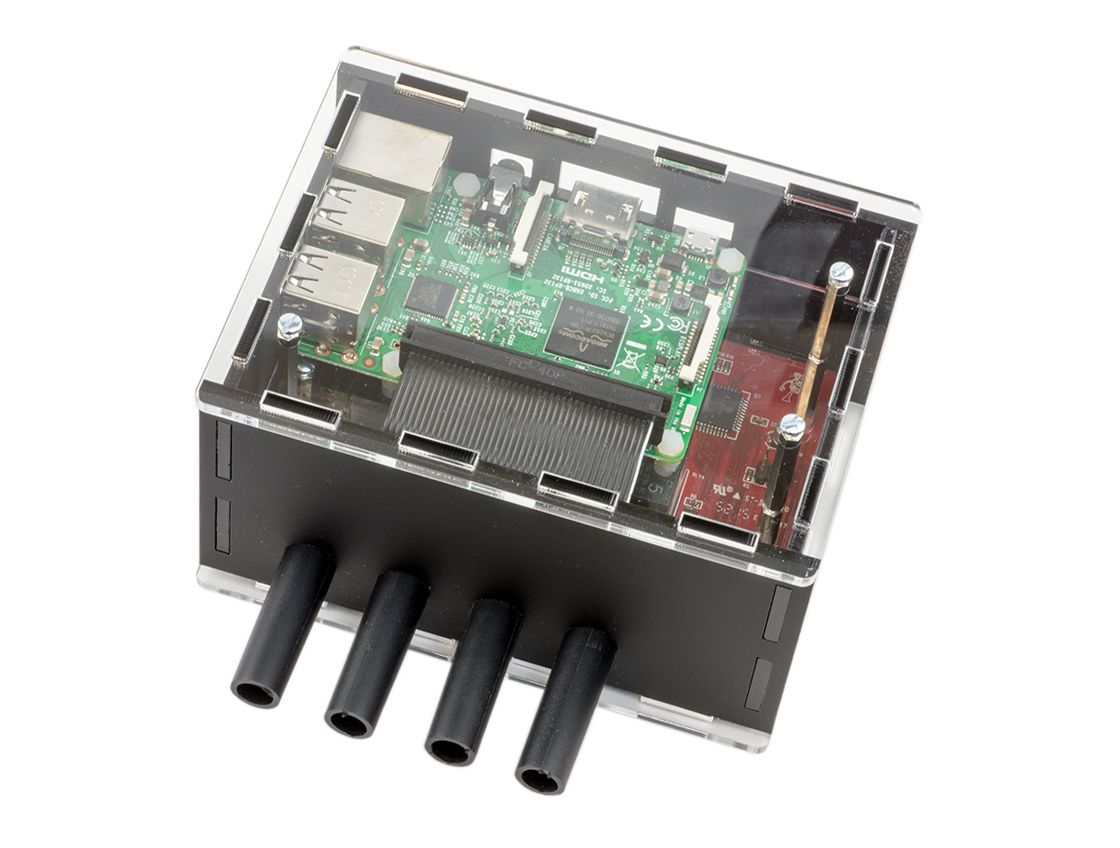
PiOT Relay B+/2/3 Case Assembly Instructions
The laser-cut parts of the case are protected by an adhesive film which needs to be removed before assembly.
Bill of Materials
- ModMyPi PiOT Relay Board
- 7x Acrylic plates
- 3x M2.5 x 25mm F/F Stand Off
- 3x M2.5 x 25mm M/F Stand Off
- 4x M2.5 x 8mm M/F Stand Off
- 8x M2.5 Screw
- 2x M2.5 Nut
- 4x Sleeved Grommet
- 12x M2.5 Nylon Nut
- 4x M2.5 Nylon Screw
NOTE: Acrylic is a hard and stiff plastic which is sensitive to stress concentrations and shares a certain level of fragility with glass. Acrylic can scratch easily and should be cleaned with a mild solution of dish detergent and warm water. Never use cleaners unsuitable for acrylic. Never use a dry, abrasive cloth.
Here are the parts from the case kit:

Follow these images checking parts and orientation of the acrylic pieces. You will see a before and after image for each step. Make sure you have all the parts ready, shown in the before picture.

Start by attaching the 8mm stand offs to the bottom clear acrylic plate using the M2.5 screws.


Place the relay board on to the 8mm stand offs and secure using 3 25mm F/F stand offs an 1 M2.5 Nut. The nut should be used on the top left corner, nearest the GPIO header.


With the center clear acrylic plate, insert four of the nylon screws in to the Pi mounting holes and secure with 2 nuts on each screw. The nuts act as spacers whilst keeping the screw in place.


Now secure one of the 25mm M/F stand offs to the bottom left mounting hole.


Now we need to plug our 40 pin ribbon cable in to the relay board. You can use either a 40 pin gpio shrouded box header, or just a simple dual row pin header. Insert your pin header or box header in to the relays gpio socket, then plug your ribbon cable in to the pin/box header.


We now need to attach the centre clear acrylic plate. Do this by placing it on top of the stand offs and secure in place using two 25mm M/F stand offs and a M2.5 screw. The screw should be used on the bottom left mount.


Now attach the Pi. Place the Pi on to the nylon screws attached to the centre plate, and secure using the nylon nuts.

Attach the ribbon cable to the Pi.


Now we need to insert the sleeved gromets in to the relay side plate. Check the orientation of the plate, compare with the picture, and slide the gromets in from behind.


Now we need to insert each of the side plates, one by one.





Finally attach the top clear acrylic plate and secure with the remaining screws.







1 comment
Jean
One design flaw of this case is that you need to connect your wires to the relay contacts BEFORE closing the case, you don’t have access to them once closed.
One design flaw of this case is that you need to connect your wires to the relay contacts BEFORE closing the case, you don’t have access to them once closed.